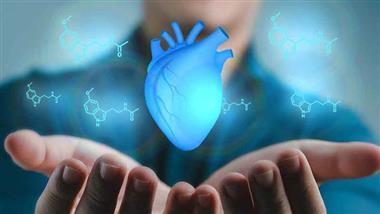Recently, I covered the possibility of transformation in health and consciousness during low-level light or darkness situations. The article explaining this was in relation to the not-so-long-ago Spain and Portugal blackout. Something amazing happened to the people affected due to the unavoidable temporary effects of low-level stimuli during the blackout: A behavioral shift occurred, and there were implications.
In contrast, this article looks at the potential health threats and health benefits of different light sources and how they impact your body. It should go without saying that the ability to discern the healthy from unhealthy light sources is key. Therefore, this article is about protecting yourself.
Blue LED (Light Emitting Diode) sources
In retrospect, the term ‘smart’ sends alarm bells ringing for many of us. The term is a cover-arm and, in truth, means anything but ‘smart’ for those of us affected.
For instance, we have ‘smart’ 15-minute cities: planned, confining, freedom-restricting neighborhood units. Then there are ’ smart’ CBDC payment systems sold to us under the guise of safe, convenient, and efficient, while hiding the fact that they will be used to monitor and control our every aspect, as with ‘smart’ 15-minute cities.
‘Smart’ screen technology is another questionable application. This standard visual display technology, now used on all mobile devices, computer screens, TVs, and lighting sources, has the potential to make us physically and mentally unhealthy.
One unhealthy aspect of this ‘smart’ technology is the use of blue LED.
Originally, there were only green and red light LED sources. The development of blue LED took over 30 years, as it was an extremely difficult technological challenge. Finally, it was brought into existence through the pioneering work of Japanese engineer Shuji Nakamura.
Blue and a combination of the other LEDS’ green and red converge to give white light, and all other colors are produced through the various combinations of these 3 primary colors. Hence, the developmental breakthrough that brought ‘smart’ screens into existence.

However, the blue LED light emitted in the frequency range of around 400-500 nanometers (nm) ( see above photo) may give rise to ill-health. Especially when subjected to frequent and long-term.
Melatonin is a hormone essential for sleep. Exposure to this blue light increases awareness while suppressing the body’s melatonin production, resulting in a lack of sleep. Blue light also impacts circadian rhythms as well as sleep patterns. Further, poor physical health, anxiety and depression may prevail due to a lack of sleep.
Thus, in effect, the suppression of melatonin due to blue light exposure from mobile devices, computer screens, TV’s and lighting sources makes this LED a significant potential health threat.
When subjected to frequent and long-term the blue light can cause a number of eye-related health problems. This includes eye strain, dry eyes, headaches, vision loss, macular degeneration… as renal cells are stressed.
On top of all this, history has shown us how flickering TV screens have further mind-controlled us through Edward Bernays type subliminal messaging, I digress. Don’t trust the mainstream media!
Red LED sources
Red light occurs in the visible spectrum between about 620nm and 700nm in wavelength (see the above photo).
In contrast to blue, red light is healthy. Red light has been shown to have specific healthy impacts on the human body. The benefits of using red-light therapy include promoting healing wounds, lowering inflammation, pain relief and the ability to contribute to tissue generation and repair (e.g. bone repair and healthy retinal cells).
A major reason for these health benefits is due to red and near infrared’s ability to contribute to mitochondrial function and energy increase in the body, with a number of positive knock-on effects.
Red light therapeutic exposure is getting increasingly used, especially just before bed time: Blue light hinders sleep. Red light promotes relaxation and sleep.
Red and near infrared light increases cognitive ability in brain-damaged or head injury traumatized patients. Further potential benefits for these patients include neuroplasticity and enhanced cerebral blood flow.
Another example of the effectiveness of red light therapy includes its use on children. For more information on red light therapy with research references, go here.
Suggested Solutions
- Spend less screen time, especially before bed or at night, to avoid blue LED.
- Get out more during the daytime. Take nature walks.
- Consider using red light therapy. Do your own diligent research to learn about the benefits. For instance, you may want to review this guide on red light therapy given by a medical doctor.
- Another potential solution includes using infrared contact lenses. It has been claimed that these recently developed contact lenses can give rise to “super-vision.” That is, these wearables go beyond limited vision and can fix people’s color blindness.
- You might also want to turn off the TV
Disclaimer
Please note that this article is not to be construed as medical advice. In relation to infrared therapy and its effects, get the trusted medical advice from a health professional at all times.







